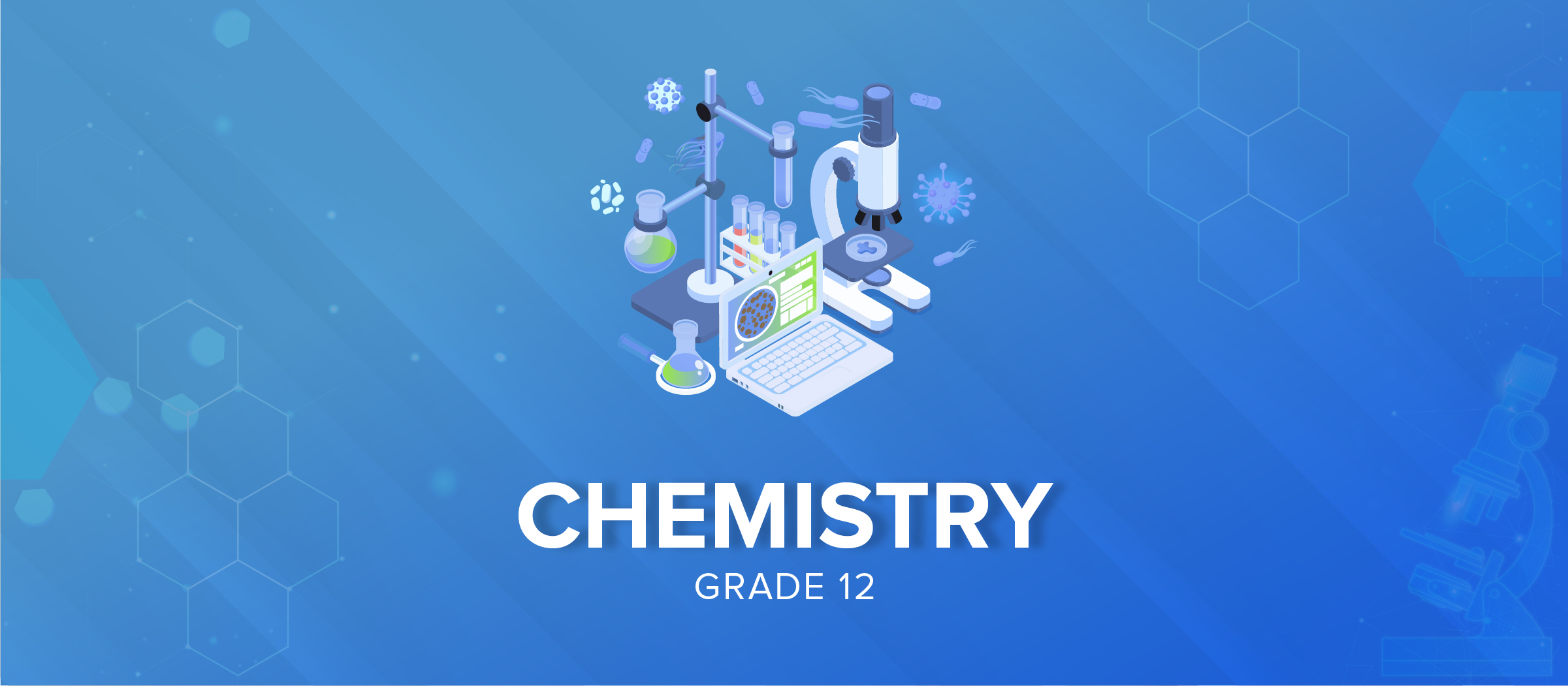
The Grade 12 chemistry curriculum is organized into four essential parts: General and Physical Chemistry, Inorganic Chemistry, Organic Chemistry, and Applied Chemistry. Within the realm of general and physical chemistry, students delve into five key chapters that establish their core understanding of ‘Volumetric Analysis’, ‘Ionic Equilibrium’, ‘Chemical Kinetics’, ‘Thermodynamics’, and ‘Electrochemistry’.
Transitioning to inorganic chemistry, the curriculum comprises two chapters dedicated to exploring ‘Transition Metals’ and the ‘Study of Heavy Metals’. These chapters unravel the distinctive properties of these elements, as well as their extraction and manufacturing processes.
Organic chemistry is a focal point and unfolds across ten chapters, progressing from the study of ‘Haloalkanes’, ‘Haloarenes’, ‘Alcohols’, ‘Phenols’, ‘Ethers’, ‘Aldehydes and Ketones’, ‘Carboxylic Acid and its Derivatives’, ‘Nitro Compounds’, ‘Amines’, to ‘Organometallic Compounds’.
The curriculum in applied chemistry encompasses four chapters, where the emphasis is on ‘Chemistry in the Service of Mankind’, ‘Cement’, ‘Paper and Pulp’, and ‘Nuclear Chemistry and Applications of Radioactivity’. These chapters enable students to grasp the fundamental principles underpinning real-world processes, bridging theoretical knowledge with practical innovations.
Throughout this learning journey, students not only acquire knowledge but also cultivate a profound awareness of the pivotal role of chemistry in shaping our surroundings. This curriculum not only imparts scientific insights but also fosters an appreciation for the elegance of chemistry in everyday life.